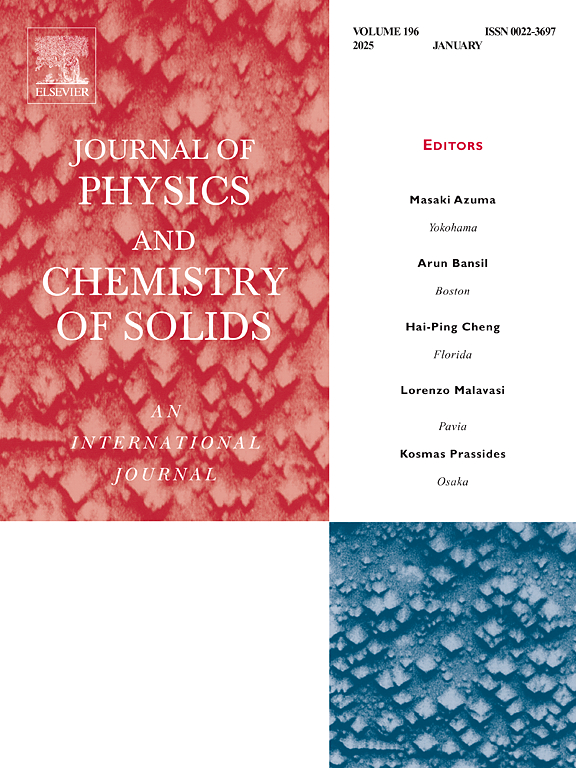Achieving over 28 % efficiency in inorganic halide perovskite Ca3AsI3: Optimization of electron transport layers via DFT, SCAPS-1D, and machine learning
IF 4.3
3区 材料科学
Q2 CHEMISTRY, MULTIDISCIPLINARY
引用次数: 0
Abstract
Recent advancements in solar technology underscore the promise of Ca3AsI3, a novel cubic perovskite with remarkable physical properties, photovoltaic performance, and machine learning (ML)-assisted predictive potential. This study systematically explores the physical characteristics of Ca3AsI3 using density functional theory (DFT) calculations. Thermodynamic stability, phonon properties, and tolerance factor evaluations confirm the high stability of Ca3AsI3, which is further validated by mechanical analyses and elastic property calculations. The bandgap analysis reveals a direct bandgap of 1.41 eV at the Γ point, confirming the semiconducting nature of Ca3AsI3, further supported by Partial Density of States (PDOS) results. Optical investigations demonstrate strong absorption across the visible to ultraviolet spectrum, as shown by dielectric functions, absorption coefficients, and conductivity measurements. These findings collectively highlight the significant potential of Ca3AsI3 perovskite for advanced solar energy applications. The findings were integrated into the Solar Cell Capacitance Simulator in 1 Dimension (SCAPS-1D) to assess the photovoltaic (PV) performance of various electron transport layers (ETLs), including Zinc sulfide (ZnS), Indium (III) sulfide (In2S3), Titanium dioxide (TiO2), and Tungsten disulfide (WS2). Optimization analysis focused on key parameters such as absorber thickness, ETL thickness, defect density, acceptor density, and interface defect density at the ETL/Ca3AsI3 junction. Additionally, temperature effects, quantum efficiency (QE), and current density-voltage (J-V) characteristics were explored. Under ideal conditions, the Al/FTO/ETL (ZnS, In2S3, TiO2, WS2)/Ca3AsI3/Au structures demonstrated maximum efficiencies of 26.59 %, 19.70 %, 27.95 %, and 28.66 %, respectively, highlighting the promising potential of these configurations. Additionally, we applied a Ridge regressor-based ML model to predict the performance of Ca-perovskite solar cells (PSCs) with TiO2 as the ETL. A dataset of 2187 data points from SCAPS-1D simulations was used, varying parameters such as absorber thickness, defect density, and TiO2 properties. The model demonstrated high accuracy with an RMSE of 0.556 and an R-squared value of 0.6917, confirming its effectiveness in modeling Ca-PSC characteristics. These findings highlight the potential of Ca3AsI3 as a promising material for optoelectronic applications.
求助全文
约1分钟内获得全文
求助全文
来源期刊
CiteScore
7.80
自引率
2.50%
发文量
605
审稿时长
40 days
期刊介绍:
The Journal of Physics and Chemistry of Solids is a well-established international medium for publication of archival research in condensed matter and materials sciences. Areas of interest broadly include experimental and theoretical research on electronic, magnetic, spectroscopic and structural properties as well as the statistical mechanics and thermodynamics of materials. The focus is on gaining physical and chemical insight into the properties and potential applications of condensed matter systems.
Within the broad scope of the journal, beyond regular contributions, the editors have identified submissions in the following areas of physics and chemistry of solids to be of special current interest to the journal:
Low-dimensional systems
Exotic states of quantum electron matter including topological phases
Energy conversion and storage
Interfaces, nanoparticles and catalysts.

 求助内容:
求助内容: 应助结果提醒方式:
应助结果提醒方式:


